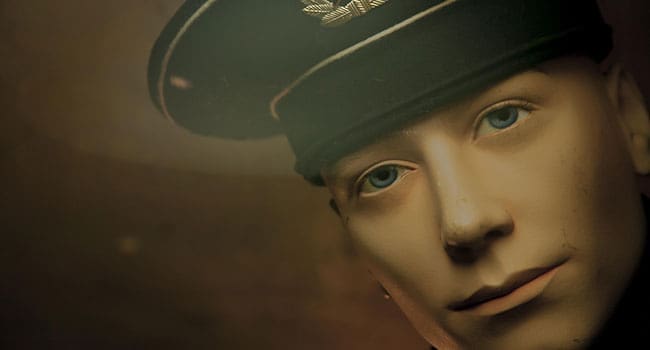 Over the past few months, we’ve heard quite a bit about Stephen Bannon, President Donald Trump’s strategic adviser and counsellor. I think of him as Trump’s ‘Asperger whisperer’ – the one man who can hold the U.S. president’s attention long enough to suggest ideas that go beyond the money metric.
Over the past few months, we’ve heard quite a bit about Stephen Bannon, President Donald Trump’s strategic adviser and counsellor. I think of him as Trump’s ‘Asperger whisperer’ – the one man who can hold the U.S. president’s attention long enough to suggest ideas that go beyond the money metric.
It would appear that his biggest idea is deconstructing the administrative state. In basic terms, this starts with cutting a third of the budget at the Environmental Protection Agency, and departments like State, Energy and Education, and redirecting cost savings to the Department of Defence. In the Ayn Randian universe of Bannon, the best government is the smallest one. With the biggest army, navy and air force.
So what would it be like to live in a completely deconstructed administrative state? Has there ever been one?
I would argue yes. It existed across Siberia as the Mikhail Gorbachev era ended in the former Soviet Union and Boris Yeltsin’s presidency of the first Russian Federation began in 1991. While the larger southern cities in the Russian Federation also experienced a great retrenchment of government services during this period, the villages of Siberia bore the greatest brunt of administrative deconstruction.
My experience of this era began in 1995 when I led a Gorbachev Foundation-funded research project in the Sami reindeer herders’ Kola Peninsula homelands, immediately south of Murmansk. The project sought, as its basic goal, to teach the Sami communities to map their patterns of land-use so they could negotiate solutions to environmental conflicts and initiate co-management with local government. In the absence of data to prove where their reindeer calved, grazed and travelled, mines were built, nuclear waste was stored and military exercises were held that negatively impacted nearly every aspect of Sami life.
From 1995 to 1998, we spent summers with the Sami, living in two of their villages, Jona and Lovozero, which jointly numbered about 2,000 people. I will never forget my first walking tour of Jona, the smaller of the two communities, when our work party arrived in 1995. Representatives of the Jona Sami Association first fed us a celebratory dinner in the president’s small apartment. We had cucumbers (a Sami staple), Norwegian Red Cross tins of sardines, reindeer soup, home-baked Borodino bread and vodka. We ventured outside after dinner before the sun began to set.
First we walked by a two-storey wooden building with many broken windows. “That was our library,” said our guide. “When the communist era came to an end and the Russian Federation was formed, government funding was gradually cut off. The librarian eventually sold the books. Bad boys have since broken the windows. The library is now kaput.”
Next we approached a long, low barn structure. “That was our state-owned dairy. When the government funding stopped, the workers couldn’t feed the cows, so they were sold to some Finns. Now we no longer have milk here or for sale to others.”
As we passed the dairy, a low-fenced circle appeared in the forest. “This was where our meteorologist worked. She was a professional scientist paid by the government to keep weather records and issue daily weather reports. When the meteorological service was defunded, she sold her equipment to eat. Now it’s all gone. We don’t know where she is now.”
As the walk continued, the medical clinic came into view. “The same problems have happened here. Our doctor had to sell the ambulance to pay the hospital’s bills and then the X- ray machine. Now when you get sick, you basically come here to die.”
It is remarkable how stoic the Russian Sami were about their predicament. “We have lived through the 70 bad years of communism and now this. Our constant amidst so much change are the reindeer herds. What is good for the reindeer is good for the Sami.” So as long as the herding culture can survive, there is hope.
But there is also tragedy. In 1998, two of our project workers, Matryona and Velodya Sotkoyarvi of Jona, were shot and killed on payday. Their murderers escaped with $70 in U.S. funds. The police from Murmansk found no suspects after a perfunctory search.
When libraries, dairies, meteorological stations and hospitals lose their funding, social order and basic comity are the first casualties.
In the deconstructed administrative state, the citizen achieves Bannon’s nirvana – it’s every man for himself.
Mike Robinson has been CEO of three Canadian NGOs: the Arctic Institute of North America, the Glenbow Museum and the Bill Reid Gallery. Mike has chaired the national boards of Friends of the Earth, the David Suzuki Foundation, and the Canadian Parks and Wilderness Society. In 2004, he became a Member of the Order of Canada.
The views, opinions and positions expressed by columnists and contributors are the author’s alone. They do not inherently or expressly reflect the views, opinions and/or positions of our publication.



A scary thought, but closer to reality than we would like to think. With the Doomsday clock at 2 1/2 minutes to midnight, and the sale of underground emergency shelters up 700% since Trump’s election, our collective sense of well being should be paying attention.